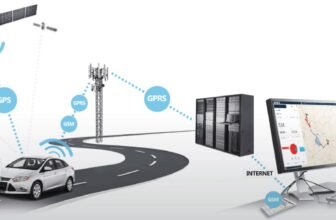
How Satellite Technology is Used in Communication: Advantages, Disadvantages, Latest Research, and Future Prospects
Satellite technology has revolutionized the way we communicate, bridging vast distances and connecting even the most remote corners of the globe. From enabling global internet connectivity to supporting real-time video calls, satellites have become an integral part of modern communication systems. This article explores how satellite technology is utilized in communication, its advantages and disadvantages, recent advancements, and its future potential.
How Satellite Technology Is Used in Communication
Satellite technology serves as a backbone for various communication networks. By orbiting the Earth, satellites act as relay stations, receiving signals from one location and transmitting them to another. Here are the primary ways satellite technology is used in communication:
1. Broadcasting
Satellites play a vital role in broadcasting television and radio signals. Satellite broadcasting ensures that content can reach a wide audience, even in geographically challenging areas. Direct-to-Home (DTH) television services rely heavily on satellite technology.
2. Internet Connectivity
Satellites provide internet services to areas where terrestrial infrastructure, such as fiber optics or cell towers, is unavailable or impractical. This is particularly crucial for rural and remote regions, ships at sea, and aircraft in flight. Companies like Starlink and OneWeb are deploying satellite constellations to deliver high-speed internet worldwide.
3. Mobile Communication
Satellites facilitate mobile communication, especially in remote or offshore areas where terrestrial networks cannot reach. Satellite phones are commonly used in disaster-stricken regions, military operations, and maritime environments.
4. Global Positioning System (GPS)
Although primarily associated with navigation, GPS satellites also support communication by providing accurate timing information. This is essential for synchronizing networks and enabling seamless communication services.
5. Emergency Communication
In times of natural disasters, when terrestrial communication networks are damaged or overloaded, satellites provide an indispensable communication lifeline. They enable rescue teams and emergency services to coordinate efforts efficiently.
6. Corporate Communication Networks
Many multinational corporations use satellite technology for secure and reliable communication across their offices worldwide. Satellite-based Virtual Private Networks (VPNs) are used to transmit sensitive data.
Advantages of Satellite Communication
Satellite technology offers numerous benefits, making it indispensable for modern communication. Some of the key advantages include:
1. Global Coverage
Unlike terrestrial networks, satellites provide global coverage, ensuring connectivity even in remote and underserved areas. This is crucial for countries with challenging terrains like mountains, deserts, or islands.
2. Cost-Effective for Wide Areas
For broadcasting and wide-area communication, satellites are more cost-effective than laying extensive terrestrial infrastructure. A single satellite can serve millions of users across vast regions.
3. Reliability
Satellite communication is less prone to natural disasters like earthquakes and floods, which can damage terrestrial infrastructure. This makes it a reliable option for critical applications.
4. Quick Deployment
Deploying a satellite-based communication network is faster than building terrestrial infrastructure, especially in remote or disaster-stricken areas.
5. Versatility
Satellites support various types of communication, including voice, video, data, and broadcasting. They are also compatible with diverse technologies and applications.
Disadvantages of Satellite Communication
While satellite communication offers many benefits, it also has some limitations. Understanding these drawbacks is essential for optimizing the use of satellite technology.
1. High Initial Costs
The cost of manufacturing, launching, and maintaining satellites is extremely high. These expenses are often passed on to end users, making satellite-based services relatively expensive.
2. Latency Issues
Due to the significant distance between the Earth and satellites, there is a noticeable delay in signal transmission, especially with geostationary satellites. This latency can affect real-time applications like video conferencing and online gaming.
3. Signal Interference
Satellite signals can be disrupted by weather conditions such as heavy rain, snow, or storms. This phenomenon, known as rain fade, can degrade the quality of communication.
4. Limited Bandwidth
Satellites have limited bandwidth capacity, which can lead to congestion and reduced data speeds when demand exceeds availability.
5. Orbital Debris
The increasing number of satellites in orbit raises concerns about space debris, which poses risks to operational satellites and future launches.
Latest Research in Satellite Communication
The field of satellite communication is constantly evolving, with new research and innovations aiming to address existing challenges and expand capabilities. Here are some of the latest advancements:
1. Low Earth Orbit (LEO) Satellites
LEO satellites, positioned much closer to the Earth than traditional geostationary satellites, offer reduced latency and improved data speeds. Companies like SpaceX’s Starlink, Amazon’s Project Kuiper, and OneWeb are deploying large constellations of LEO satellites to provide global broadband coverage.
2. High-Throughput Satellites (HTS)
HTS technology significantly increases the capacity of satellites by using multiple spot beams instead of a single wide beam. This enables higher data rates and more efficient bandwidth utilization.
3. Quantum Communication
Quantum communication via satellites is an emerging field with the potential to revolutionize secure communication. China’s Micius satellite has already demonstrated quantum key distribution (QKD), enabling ultra-secure data transmission.
4. AI and Machine Learning
Artificial intelligence (AI) and machine learning are being integrated into satellite systems to optimize operations, predict weather conditions, and enhance signal quality. These technologies also enable better resource management in satellite constellations.
5. Optical Communication
Laser-based optical communication is being developed to replace traditional radio frequency systems. Optical communication offers higher data rates, reduced interference, and improved security.
6. Green Satellites
Efforts are underway to develop environmentally friendly satellites with reduced carbon footprints. Innovations include electric propulsion systems and the use of biodegradable materials.
Future Prospects of Satellite Communication
The future of satellite communication is bright, with advancements poised to transform the way we connect and communicate. Here are some potential developments:
1. Global 5G Integration
Satellites will play a critical role in extending 5G connectivity to remote and underserved areas. By complementing terrestrial networks, satellites can ensure seamless global coverage and support emerging technologies like the Internet of Things (IoT).
2. Smart Cities and IoT
Satellite communication will be integral to the functioning of smart cities, enabling real-time data exchange between IoT devices. This includes applications such as traffic management, environmental monitoring, and public safety.
3. Space-Based Data Centers
Future satellites may serve as space-based data centers, reducing latency for global cloud computing services. This could revolutionize industries such as finance, gaming, and e-commerce.
4. Inter-Satellite Communication
The development of inter-satellite links will enable seamless communication between satellites, creating a robust and interconnected network. This will enhance data transmission efficiency and reduce dependence on ground stations.
5. Expansion into Deep Space
Satellite communication will extend beyond Earth’s orbit, supporting missions to the Moon, Mars, and beyond. This will be critical for establishing lunar bases, interplanetary exploration, and deep-space research.
6. Enhanced Security
Future satellites will incorporate advanced encryption and quantum communication technologies to ensure secure data transmission. This will be particularly important for military and government applications.
7. Affordable Access
As technology advances and competition increases, the cost of satellite-based services is expected to decrease, making them more accessible to a broader audience.
Satellite technology has become a cornerstone of modern communication, offering unparalleled reach and reliability. While there are challenges such as high costs, latency, and signal interference, ongoing research and innovation are addressing these issues and unlocking new possibilities. From expanding internet access to enabling secure quantum communication, satellites are poised to play an even more significant role in our interconnected world. As we look to the future, the integration of satellite technology with emerging trends like 5G, IoT, and AI promises to revolutionize the way we live, work, and communicate, ensuring that no corner of the Earth remains disconnected. image/wikimedia





